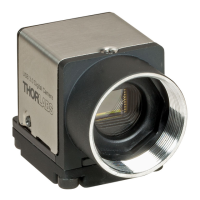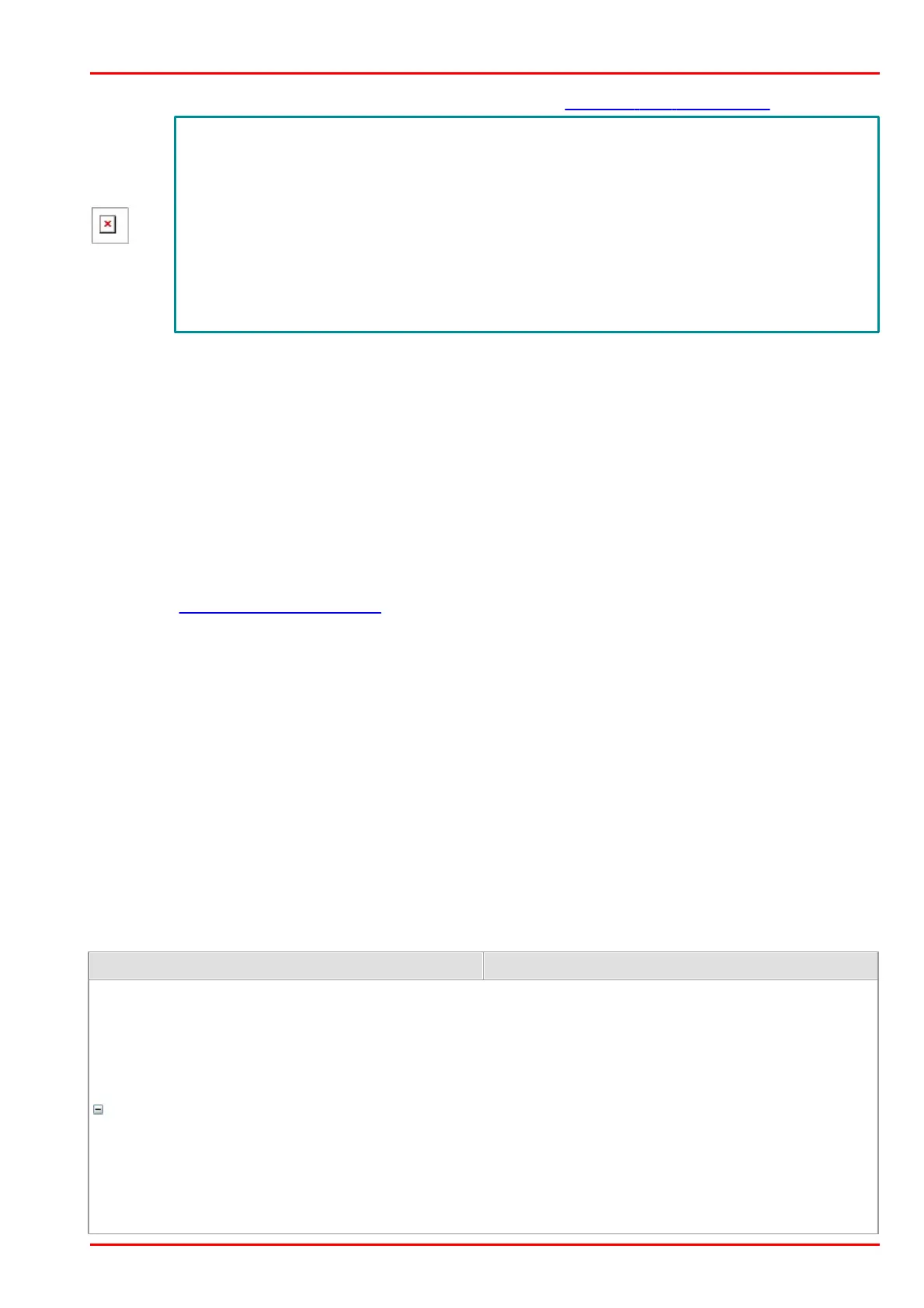© 2016 Thorlabs Scientific Imaging
4 Programming (SDK)
203
modification will be applied to the next image. See also the Applying new parameters chapter.
In general, the pixel clock is set once when opening the camera and will not be
changed. Note that, if you change the pixel clock, the setting ranges for frame rate and
exposure time also changes. If you change a parameter, the following order is
recommended:
1. Change pixel clock.
2. Query frame rate range and, if applicable, set new value.
3. Query exposure time range and, if applicable, set new value.
If one parameter is changed, the following parameters have to be adjusted due to the
dependencies.
Accuracy of the exposure time setting
The increments for setting the exposure time (IS_EXPOSURE_CMD_GET_EXPOSURE_RANGE_INC)
depend on the sensor's current timing settings (pixel clock, frame rate). The smallest increment
usually corresponds to the duration of one pixel row, which is the time it takes the sensor to read
out one pixel row.
You can query the actual exposure time setting with the IS_EXPOSURE_CMD_GET_EXPOSURE
parameter.
Some sensors allow setting the exposure time in smaller increments. Using the
IS_EXPOSURE_CMD_GET_CAPS parameter, you can check whether your sensor supports this function.
For minimum and maximum exposure times as well as other sensor-based dependencies, please
refer to the Camera and sensor data chapter.
Rounding errors from increments
When calculating a new exposure time based on the returned increment, note that calculations with
floating point values in the PC will always be subject to rounding errors. Therefore, an addition or
subtraction of the n*INCREMENT value might not always produce the exact desired result. In this
case, the uc480 API rounds down the floating point value and sets the exposure time to the next
lower value.
You can avoid this behavior by additionally adding the value INCREMENT/2.f (half increment) when
calculating with n*INCREMENT. This ensures that the desired value will be set even after rounding.
The nCommand input parameter is used to select the function mode. The pParam input parameter
depends on the selected function mode. If you select functions for setting or returning a value,
pParam contains a pointer to a variable of the UINT type. The size of the memory area to which
pParam refers is specified in the cbSizeOfParam input parameter.
Input parameters

